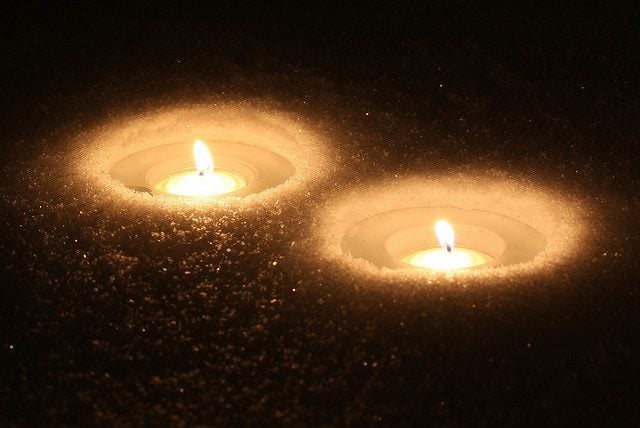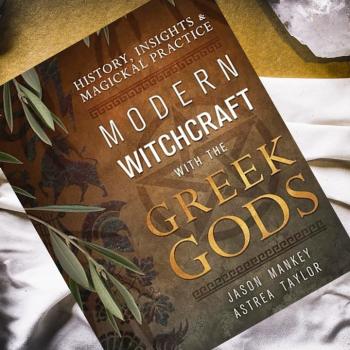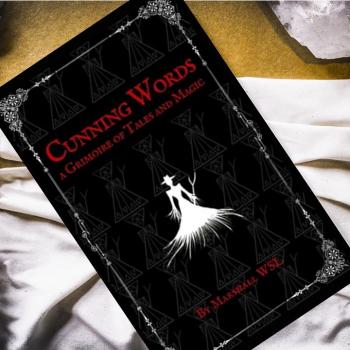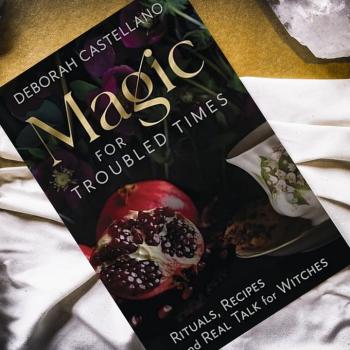Welcome to the first post of Naturalistic Traditions, a new column exploring naturalism in Pagan ways. This column will cover seasonal celebrations, historical and contemporary movements, and ritual practices.
Natural cycles
February 4th is a Cross-quarter. That is, it is the midpoint between the previous solstice and the upcoming equinox. As such, it is one of eight stations in our planet’s annual journey around the sun.
For those in the Northern Hemisphere, the claws of winter are harsh at this time, even though sunlight has already started returning. It takes a while for the climate to warm in response to the longer day, so the earth remains cold. While the Winter Solstice is the time of longest darkness, the February Cross-quarter is the time of greatest cold. Yet, like a secret promise, the sun is returning.
Those in the Southern Hemisphere experience the opposite, looking forward to autumn.
Neopagan and Pantheist traditions

In the Northern Hemisphere, this time is traditionally celebrated in the Neopagan Wheel of the Year as Imbolc. Other names include Oimelc, Brigit, Brigid’s Day, Bride’s Day, Brigantia, Gŵyl y Canhwyllau, and Candlemas. Those in the Southern Hemisphere celebrate Lammas instead at this time.
Imbolc derives from Celtic traditions surrounding the goddess Brigid, whose sacred fire at Kildare was tended by virgin priestesses. It marks the season when ewes birth and give milk. It is a time of emergence, as the herd brings new life into the world, and we look forward to the coming spring. One custom to observe this is placing a well-protected candle in each window of the house, to shine the light of life out into the snowy cold (Nichols, 2009).
Glenys Livingstone of PaGaian, a naturalistic tradition revering the Goddess as a metaphor for the Cosmos, recommends meditating upon emerging Creativity through the ever-new flame of the candle, the beginning of the in-breath, and the word om. It is a time for individuation, a time to renew dedication of one’s small self to the big self:
“A dedication to Brigid means a dedication to the Being and Beauty of particular small self, and knowing deeply its Source – as an infant knows deeply its dependence on the Mother, as the new shoot on the tree knows intimately its dependence on the branch and the whole tree, as the new star’s being is connected to the supernova. It is a dedication to the being of your particular beautiful Self, rooted seamlessly in the whole of Gaia.” (Livingstone, 2008)
Jon Cleland Host of the Naturalistic Paganism yahoo group suggests making snow candles – an activity especially fun for kids (see files section of group).
On February 17th, Paul Harrison of the World Pantheist Movement remembers the day that Giordiano Bruno was burned at the stake for his Pantheist beliefs and insistence that the earth revolves around the sun, that there are infinite worlds inhabited by intelligent beings, and that the sun is essentially a star. Harrison recommends taking the day to remember the importance of religious freedom and tolerance (Harrison, 2004).
Civic and scientific traditions
 Around this time, on February 12th, is Darwin Day. This commemorates the birthday of the one who contributed the theory of natural selection to our understanding of evolution, Charles Darwin. Many Humanists and others celebrate this day with workshops, art contests, protests, or dinner parties serving “primordial soup.” Darwin Day is featured by the Secular Seasons project.
Around this time, on February 12th, is Darwin Day. This commemorates the birthday of the one who contributed the theory of natural selection to our understanding of evolution, Charles Darwin. Many Humanists and others celebrate this day with workshops, art contests, protests, or dinner parties serving “primordial soup.” Darwin Day is featured by the Secular Seasons project.
On Carl Sagan’s Cosmic Calendar, which maps the entire history of our cosmos onto a single year, February represents a primordial period of matter coalescing and stars forming after the the Big Bang. Much like the returning sun, the birthing of the herds, and the growing Creativity of PaGaian, the Cosmic Calendar reminds us of emergence.
About the author
B. T. Newberg has been practicing meditation and ritual from a naturalistic perspective for eleven years and counting. After experimenting with Agnosticism, Buddhism, Contemporary Paganism, and Spiritual Humanism, he currently combines the latter two into a dynamic path embracing both science and myth. He is the editor of a community blog for naturalistic spirituality called Humanistic Paganism, which just published an anthology called Year One with over a dozen contributing authors. After growing up in Minnesota, and living in England, Malaysia, and Japan, B. T. Newberg currently resides in South Korea with his wife and cat.
References
Harrison, P. (2004). The Elements of Pantheism. Coral Springs, FL: Llumina Press.
Livingstone, G. (2008). PaGaian Cosmology. New York: iUniverse.
Nichols, M. (2009). Candlemas: The light returns. The Witches’ Sabbats. www.thewitchessabbats.com.















